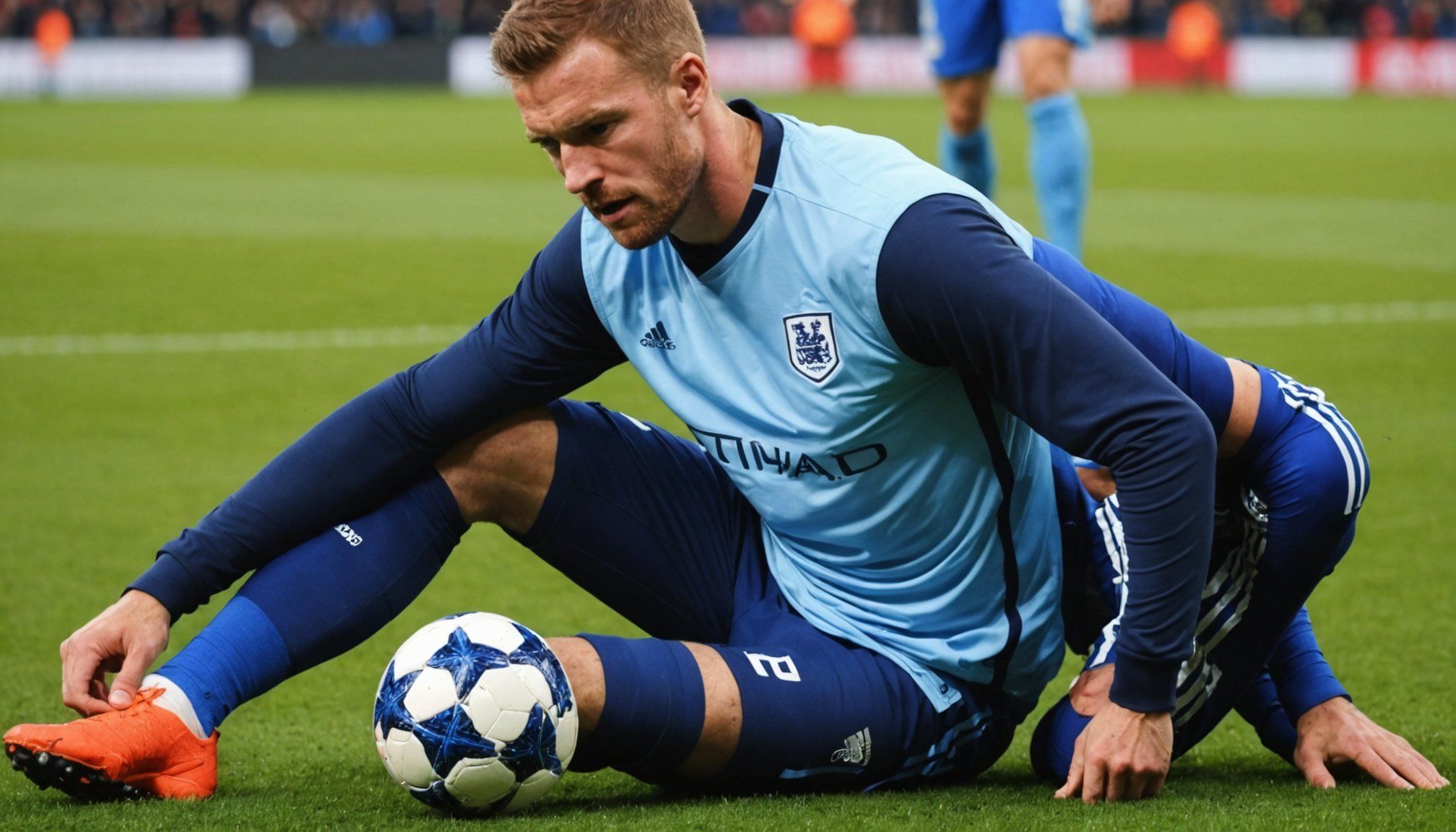Football, or soccer as it is known in some parts of the world, is one of the most popular sports in the UK. With millions of players, from amateurs to professionals, injuries are an inevitable part of the game. Understanding the most common injuries can help players take proactive measures to avoid them and maintain their performance on the field. In this article, we will explore the prevalent injuries seen in UK football and discuss effective prevention strategies that all players should consider.
Understanding Common Football Injuries
Injuries in football often arise from the physical demands of the game, where players engage in running, jumping, and sudden directional changes. The most common injuries can be broadly categorized into two types: soft tissue injuries and bone injuries. Soft tissue injuries include strains, sprains, and contusions, while bone injuries often involve fractures and stress fractures.
Have you seen this : What technological innovations are shaping the future of coaching in UK football?
Strains occur when muscles are stretched too far, often affecting the hamstrings, quadriceps, or calves. Sprains, on the other hand, involve ligaments and commonly occur in the ankle or knee. Contusions can also occur due to direct impact, leading to bruising and swelling in the affected area. These injuries can sideline players for varying periods, depending on their severity.
Bone injuries like fractures can happen due to falls or collisions. Stress fractures are particularly troublesome, as they develop over time due to repetitive force on the bones, often affecting the lower leg or foot. The high-speed nature of football, combined with the physical contact involved, makes these injuries quite common among players of all ages.
Also to discover : How can football academies in the UK ensure they are nurturing talent effectively?
Being aware of these common injuries is the first step in prevention. When players understand the risks and the mechanics behind these injuries, they can take the necessary precautions to protect themselves during play.
The Role of Conditioning and Fitness in Injury Prevention
Conditioning is crucial in preventing injuries. When players are physically fit, their bodies are better equipped to handle the stresses of football. A well-rounded fitness program should focus on strength, flexibility, and endurance. Strengthening the core and lower body can provide the necessary support for joints, particularly in the knees and ankles, which are susceptible to injuries.
Incorporating strength training exercises, such as squats, lunges, and leg presses, can build muscle strength around vulnerable areas. Additionally, plyometric exercises can improve explosive movements needed for sprinting and jumping. Flexibility is equally important, as it allows joints to move through their full range of motion. Regular stretching and yoga can enhance flexibility, reducing the risk of strains and sprains.
Endurance training cannot be overlooked either. Football players should engage in cardiovascular activities that improve their stamina, such as running or cycling. A well-conditioned player can maintain their performance throughout the match, decreasing the likelihood of fatigue-related injuries.
Moreover, understanding one’s body is key. Players should listen to their bodies and recognize signs of fatigue or discomfort. Pushing through pain can lead to serious injuries, so it’s crucial to prioritize health over performance.
Warm-Up and Cool-Down: Essential Practices
Warming up before a game or training session is not merely a formality; it is a critical practice that can significantly reduce injury risk. A proper warm-up increases blood flow to the muscles, enhances flexibility, and prepares the body for the physical demands of football.
Players should engage in dynamic stretching, which involves movements that mimic football actions, such as high knees, butt kicks, and leg swings. A warm-up should last at least 15-20 minutes and can also include light jogging and ball drills to get players mentally and physically prepared.
Similarly, cooling down after a game is equally important. A cool-down allows the body to transition from high-intensity activity to a resting state gradually. This process includes light jogging or walking followed by static stretching to aid recovery and maintain flexibility. Failing to cool down properly can lead to muscle stiffness and increase the risk of injuries in subsequent training or matches.
Incorporating these practices into your routine can lay the groundwork for a successful football career. It not only minimizes injury risks but also improves overall performance, allowing players to enjoy the game longer.
The Importance of Proper Equipment
Using the right equipment is essential for injury prevention in football. Footwear, for instance, plays a vital role in providing support and traction on the pitch. Players should wear boots that fit well, are appropriate for the playing surface, and provide adequate ankle support. Different pitches may require different types of studs or cleats, so being aware of these factors can make a significant difference.
Shin guards are another critical piece of equipment that should not be overlooked. They protect the lower legs from impacts and tackles, which are common in football. Players should ensure their shin guards are the correct size and fit securely to provide maximum protection.
Moreover, wearing supportive gear, such as knee braces or ankle supports, can offer additional protection for players with a history of injuries in these areas. While these supports may not be necessary for all players, they can provide peace of mind and reduce the risk of re-injury for those who have previously sustained injuries.
In addition, players should be mindful of their playing environment. Wet or muddy pitches can increase the likelihood of slipping and falling, leading to injuries. Ensuring that your playing area is safe and well-maintained is just as crucial as personal equipment. Players should advocate for proper field conditions and take responsibility for their safety during play.
In conclusion, football injuries are a common concern for players at all levels, but many can be prevented with proper awareness and proactive measures. By understanding the most common injuries, focusing on conditioning and fitness, emphasizing warm-up and cool-down routines, and using appropriate equipment, players can significantly reduce their risk of injury.
Ultimately, maintaining a strong focus on these aspects will not only enhance performance but also prolong your careers and enjoyment of the game. As participants in the beautiful game, let us prioritize health and safety, ensuring that we can play passionately and without the constraints of injury.











